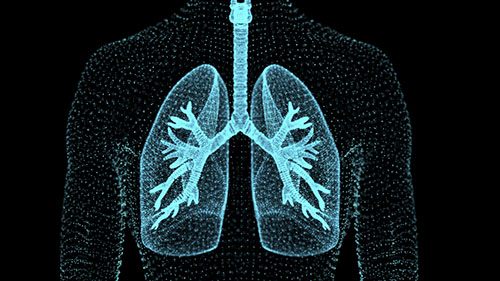What is the ‘tripledemic?’
Understanding the collision of COVID-19, seasonal influenza, and RSV
“Tripledemic.” It’s a term wafting through social circles and making rounds in the news cycle. With reports of overflowing hospitals and illness gripping thousands in record proportions, it leaves one to wonder — just what is going on?
“A perfect storm, as it were, of three respiratory viruses that are happening concurrently,” according to Dr. Karen Phillips, Chief Medical Officer and Senior Medical Program Director for Respiratory Interventions at Medtronic.

There’s no strict definition of “tripledemic,” Phillips said. It’s a term coined by the media to encapsulate what’s burdening an already weary healthcare system: early peaks of seasonal influenza and respiratory syncytial virus (RSV), plus cases of COVID-19, which continue to steadily climb in the U.S.1 The result significantly impacts hospitals that are dealing with the fallout, she said.
According to the U.S. Centers for Disease Control and Prevention, flu activity started early this year — reaching winter peak levels in the fall. Flu hospitalization rates have been higher this season compared to every other season since 2010-11.2 At the end of December 2022, the CDC estimated there have been at least 20 million illnesses, 210,000 hospitalizations, and 13,000 deaths from the flu.
Similarly, RSV usually peaks between December and February each year. In 2022, it reached winter peak levels in October and November.
What’s behind the early peak?
Why the viruses are peaking early this season is still up for debate.
“One of the main arguments is that for the last two years we were all masked up and indoors and masks are fairly effective at preventing all three of these,” Phillips said.
Further, some public health experts believe it’s a product of something called “viral interference,” according to Dr. John de Csepel, Global Regions Chief Medical Officer and Vice President of Clinical Research and Medical Science at Medtronic.
“It’s a power struggle back and forth between different viruses,” de Csepel said.
It’s not the number of unseasonably early cases that’s concerning, de Csepel said. Rather, it’s when the cases are occurring — weeks ahead of schedule and all together.
“This is a real crisis in the U.S.,” de Csepel said. “Not only is it putting a strain on our healthcare workers, but too many patients in the hospital at once can lead to poor outcomes.”
How long will it last?
How long the “tripledemic” will drag on is unclear.
“No one precisely knows the answer,” de Csepel said. “It almost doesn't really matter because we're going to hopefully get through this in a short period of time, just earlier in the year than we would have otherwise.”
In the meantime, many mitigation measures used the last two years for COVID-19 still apply for keeping healthy this season. Phillips recommended the following to help limit the spread of illness:
- Get your annual flu shot and the latest bivalent COVID-19 vaccine.
- Practice good hygiene by washing your hands frequently and encourage children to do the same.
- Keep gatherings with others small or avoid them entirely.
- Stay home if you’re ill.
- Don’t be afraid to wear a mask, especially if you’re ill or visiting someone who is — they can help limit the spread of COVID-19, RSV, and the flu.
L001-01102023



